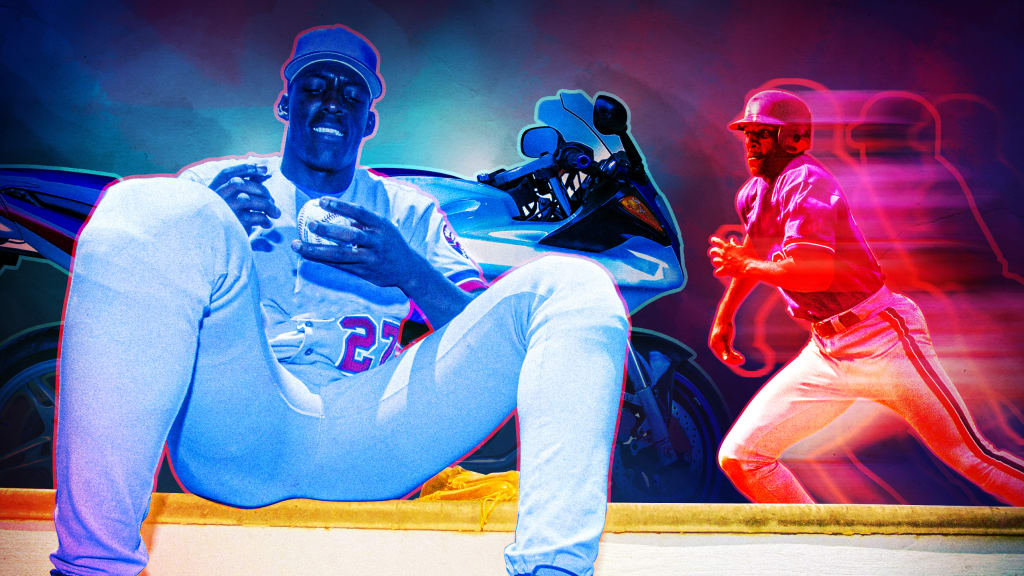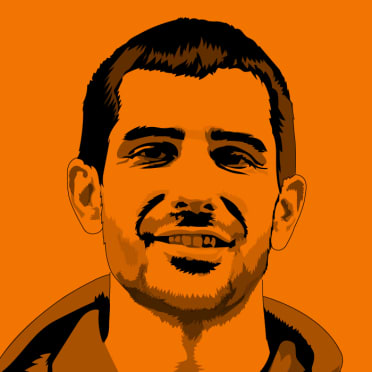
A version of this story was originally published in June 2020.
"I was in the Dominican for my normal visit," former Expos scout Fred Ferreira told MLB.com. "I had about 20 players or so, 25 maybe. And just as we get to the gate, a motorcycle pulled up with a player on the back and the fella driving it asked me if we could see another player. I said sure and asked what position. He was an outfielder and his name was Vladimir."
----------------
During his 16 years in the big leagues, Vladimir Guerrero was larger than life.
He hit 449 home runs, he won an MVP Award, he stole nearly 200 bases, his throws felt almost poetic -- unobstructed by gravity or time, sailing along gracefully to their intended targets.
He was known as Big Bad Vlad or Vlad the Impaler or Big Daddy Vladdy. Hitters wanted to be like him, pitchers were afraid to throw it near (or even far from) him. He was enshrined in the Hall of Fame. His family has become a baseball-mashing factory.
But was Vlad Guerrero always this famous?
No, he wasn't, and his Expos tryout at the age of 18 shows it. Here's more on that surreal afternoon back in 1993, in the Dominican Republic town of Mendoza ...
Guerrero had been to a couple of big league camps before casually dropping in to see Ferreira at the Expos' facility that afternoon. The Dodgers had him for 30 days, the Yankees had tried him out as a pitcher but, for some reason, he didn't stick in either place. His brother Wilton -- who had an eight-year MLB career -- did end up getting a contract with Los Angeles.
Eighteen-year-old Vlad had reached his full height but hadn't totally filled out. He'd been playing baseball since he was 5 years old, just not always with baseballs. He and his friends used lemons or limes rolled up in socks, guava tree bats and milk cartons for gloves. He did have very "large hands," as Ferreira noted in his scouting report, perhaps from years of herding uncooperative cattle on his family's farm in the town of Nizao Bani.
"We generally start with our outfielders throwing to third base, and then home, and he threw, well, sort of exceptionally," Ferreira remembers. (Other scouts had compared his arm to Roberto Clemente's.) "He opened my eye immediately. You wanna see life on the ball and it had that skip in the infield. It wasn't a ball that was bouncing to third. On the fly, real good."

"Our next step would be running the 60-yard dash," Ferreira says. "Vladimir ran -- he was one of the first three or four to go -- and he ran a 6.6, which was exceptional for me. ... And uh, he had two different shoes on."
Ferreira asked Vlad if he had another pair of shoes like that at home, and Vlad laughed.
"Yeah, they were two different colors," Ferreira recalls. "I spotted it right away but didn't say anything. He put half of a sock at the top of one. You might get a 6.8 or 6.9, but he ran a 6.6 and that was enough right there."
Two tools that can't really be taught: Throwing and running (with mismatched shoes). Vlad had excelled at both, which made everyone wonder, "Who is that kid?"
Then, it was time to hit.
Ferreira had Guerrero bat leadoff so he could see him seven or eight times before he had to catch a flight back to Miami.
"So he's leading off the first inning, he hits a ground ball to the hole at short, and he's running down the first-base line and boom -- he pulls a muscle," Ferreira recalls. "I walked over to him and knew he probably wouldn't continue any more today."
But Ferreira, a man known as "The Shark of the Caribbean" for his signings of great Hispanic players like Jose Vidro, Bernie Williams and Orlando Cabrera, had seen all he needed to see. (Hence his scouting report for Vlad, which listed "No found weakness" under the section entitled Weaknesses.)
Ferreira asked the now dejected teenager if he wanted a contract with Montreal. Guerrero's eyes lit up, Ferreira went with him to his mother's house in nearby Nizao Bani and they inked a $10,000 deal. Sports Illustrated has since named it the second-best baseball deal ever, behind only the Yankees getting Babe Ruth from the Red Sox.
Guerrero was immediately put on an Expos-affiliated Dominican League summer team, and that's where Ferreira saw he could hit a little bit as well.
"I was anxious to see him the first couple games and he was elite there," Ferreira says. "Just hitting the ball all over the place. Had a hit wherever it was at. Ten hits in three games. He was player of the month six months in a row."
One story really summed up Vlad's prowess at the plate.
"I made about my fourth visit there and [Vlad] talked to my assistant. My assistant came over and he said: 'Fred, are you upset with Vladimir?'
"I said, 'No, why?'
"'He's upset that you're making him hit last now.'
"'I'm only telling him to hit last because he's losing all the balls.'
"We had goats in the outfield," Ferreira said. "And they would take the balls. I had to explain to [Vlad] that was the reason. Let him hit last, he's losing all the balls and there'll be none left."
Guerrero zipped through the Minor Leagues for the next couple of seasons, and even after displaying this much raw talent, nobody seemed to know who he was during a pinch-hitting appearance for the Expos in 1996. It was like he'd, once again, shown up unannounced on the back of a motorcycle.
Braves announcers were unsure what he was doing in the batter's box, wondering, for the umpteenth time:
"Who is that kid?"
